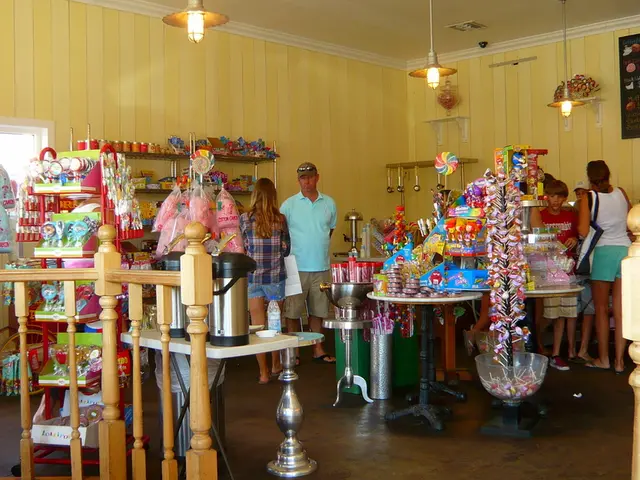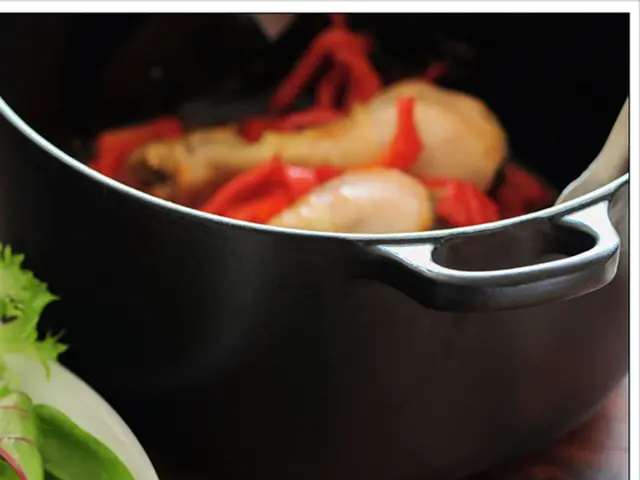Russian potatoes hit all-time price peaks.
Russia's Potato Crisis: Why Are Prices Skyrocketing?
In the vibrant heart of Russia, the cost of a simple potato has become a matter of concern. With an alarming surge, the humble spud has seen its price soar by over 85% since the start of 2025. Wholesale prices have reached record heights, nearing quadruple that of the same season last year. Retail prices now hover around 85.4 rubles per kilogram, marking a staggering triple increase from 2024 levels.
According to reports by "Kommersant," the average wholesale price for potatoes from the 2024 harvest hit a historical high of 46.3 rubles per kilogram by the end of April, skyrocketing by 85.2% compared to the year's start. The same source estimates the average wholesale price on May 2 at 47.6 rubles per kilogram, reflecting a 25% rise over the past month.
Rosstat statistics reveal that the average retail price of potatoes stood at 85.4 rubles per kilogram on April 28, registering a whopping 2.8 times year-over-year increase. Retailers are left struggling to sell the most affordable positions at prices below their purchasing costs.
The surge in prices is tied to several factors, including reduced yields and stocks, limited storage infrastructure, energy-intensive production, and bolstered demand. In 2023, the situation was reversed, with a record harvest driving prices down. Consequently, many producers couldn't recoup their costs, compelling them to reduce planting areas. Preliminary data from Rosstat suggests a 11.9% year-on-year decline in total potato production in all households in Russia in 2025.
Currently, shelves in Russian stores are brimming with imports from Egypt, Pakistan, and China, as domestic supplies run dry. The Ministry of Agriculture attributes this predicament to the traditional influx of imported young potatoes during the first half of the year. In response, the ministry has implemented measures to regulate customs tariffs.
Outdated storage infrastructure and labor costs are significant hurdles in the supply chain. Many facilities lack modern climate control systems, causing an estimated 20-30% spoilage before potatoes reach the market[4]. Historically, labor costs were kept low using students and researchers. Now, producers are compelled to hire seasonal workers or automate processes, adding to expenses[4].
Retail markup practices, shifts in demand, import policies, price regulation, economic constraints, and seasonal fluctuations also play a role in Russia's potato price crisis. Each of these factors contributes to the increased prices and food insecurity concerns for many Russian consumers. To address this issue, market experts recommend increasing production to stabilize prices[2][5].
Moscow, Zoya Oskolkova
© 2025, RIA "Novy Day"
- By 2025, the average wholesale price for potatoes in Russia reached a historic high of 47.6 rubles per kilogram, marking an 85.2% increase since the beginning of the year.
- In the food-and-drink industry, retail prices for potatoes in Russia have soared to 85.4 rubles per kilogram, reflecting a staggering triple increase from 2024 levels, straining household finances and lifestyles.
- The average retail price of potatoes in Russia in 2025 is expected to remain high due to factors such as reduced yields, limited storage infrastructure, and energy-intensive production, as suggested by data from Rosstat.
- In response to rising potato prices and domestic supply shortages, the Ministry of Agriculture in Russia has implemented measures to regulate customs tariffs and encourage domestic production to prevent further increases in food-and-drink costs.
- As imports from countries like Egypt, Pakistan, and China continue to flood Russian stores due to domestic supply shortages, the finance ministry and industry stakeholders are calling for investments in modern storage infrastructure and technology to enhance potato production, thereby stabilizing prices and addressing concerns related to food security.








